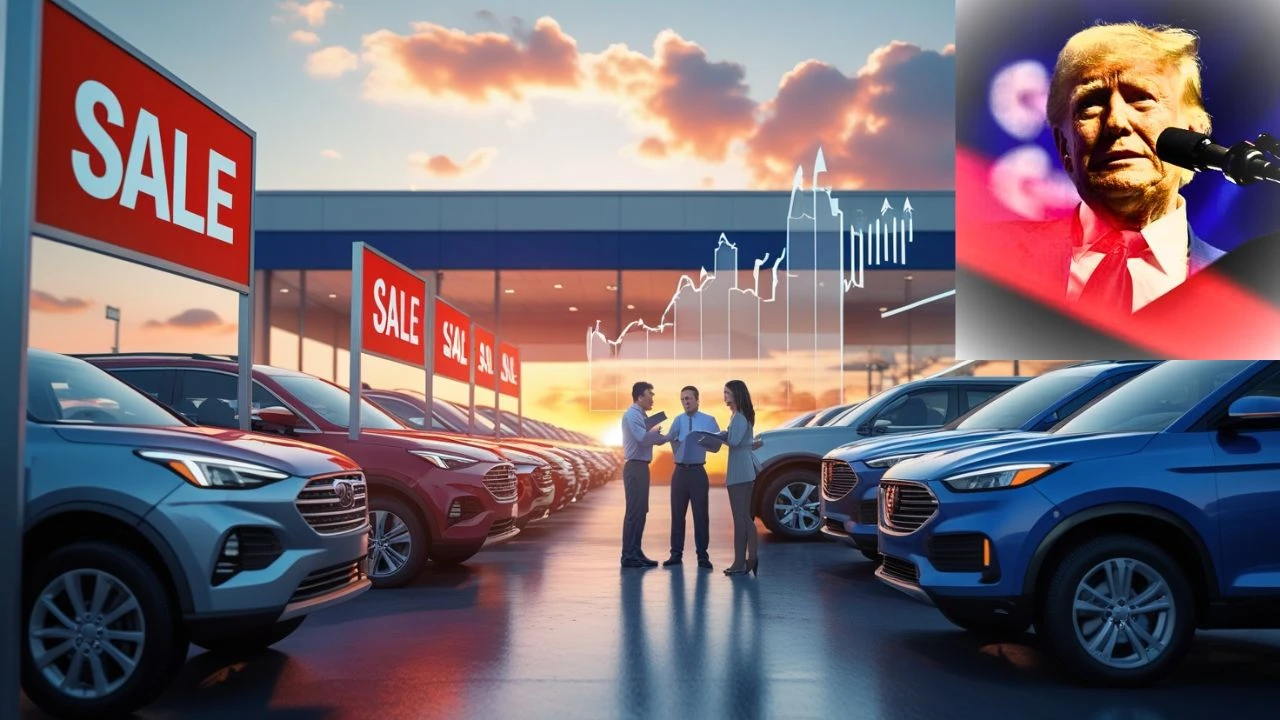Trump’s 25% car tariffs spark a buying frenzy. Will prices soar? Learn if you should buy now or wait to beat the shortage. Stay ahead in 2025!
April 19, 2025 – President Trump’s new 25% tariffs on imported cars and parts, effective April 3, 2025, are sending shockwaves through the U.S. auto industry. With major automakers like Nissan, Honda, and Toyota scrambling to shift production to the U.S., consumers are racing to dealerships, fearing price hikes and a looming car shortage. Here’s what you need to know—and whether you should buy now.
Why Tariffs Are Shaking Up the Auto Market
Announced on March 26 and detailed on April 3, the tariffs target imported vehicles (sedans, SUVs, minivans, light trucks) and over 150 auto parts, including engines, batteries, and tires. While USMCA-compliant parts are temporarily exempt, the tariffs are already disrupting global supply chains.
- Nissan is slashing Japanese production of its Rogue SUV, a top-selling U.S. model, over May-July.
- Honda plans to boost U.S. production by 30% within two to three years, aiming for 90% local manufacturing.
- Toyota is considering U.S. production for its RAV4 to dodge tariffs.
These shifts aim to reduce costs but could take years, leaving consumers facing higher prices as early as May 2025 when parts tariffs kick in.
Consumers Panic-Buy as Shortages Loom
Social media is abuzz with warnings of a “car shortage” as buyers rush to purchase vehicles before prices climb. One X post claimed, “US is nearing a car shortage as customers rush to buy vehicles and auto manufacturers make major cuts to new vehicle production.” Dealerships report surging demand, with some models already in short supply.
Data shows a sales surge after the tariff announcement, with U.S. light-vehicle sales up 2.7% through March 2025. Analysts warn that prices could rise 10-20% for imported models, hitting budget-conscious buyers hardest.
Should You Buy Now?
The decision to buy depends on your needs and budget. Here’s a breakdown:
Reasons to Buy Now
- Beat Price Hikes: Tariffs could increase car prices by thousands, especially for imported brands like Toyota, Honda, and Nissan.
- Avoid Shortages: Limited inventory may make it harder to find your preferred model later in 2025.
- Incentives: Carmakers are offering discounts to clear pre-tariff stock.
Reasons to Wait
- Market Stabilization: Prices may stabilize as automakers adjust production or negotiate trade deals.
- New Models: Waiting could give access to 2026 models with upgraded safety features, like those seen in global trends (e.g., six airbags standard).
- Financing Risks: Rushing may lead to unfavorable loan terms in a high-demand market.
What’s Next for the Auto Industry?
The tariffs are reshaping the industry long-term. Ford may raise prices in May if tariffs persist, while EV makers like Tesla face challenges as sales dip (7.2% market share in February). Meanwhile, autonomous vehicle projects, like Waymo’s expansion, signal a tech-driven future, but tariffs could slow innovation by raising component costs.
How to Stay Ahead
- Monitor Deals: Check manufacturer websites for pre-tariff incentives.
- Research Models: Prioritize U.S.-made vehicles (e.g., Ford, GM) to avoid tariff-driven price spikes.
- Act Fast (If Needed): If you’re in the market, visit dealers soon to secure current pricing.
The tariff frenzy is a wake-up call for car buyers. Whether you rush to buy or wait it out, stay informed as the auto market navigates this turbulent time.
Sources: Reuters, Automotive News, Foley & Lardner LLP, X posts

